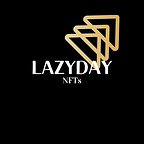All about NFTs — Part 1
In brief:
- Non-fungible tokens (NFTs) are cryptographically unique tokens that are linked to digital (and sometimes physical) content, providing proof of ownership.
- They have many use cases, including artwork, digital collectibles, music, and items in video games.
Cryptocurrencies, utility tokens, security tokens, privacy tokens… digital assets, and their classifications are multiplying and evolving right alongside cryptographic and blockchain technology.
Non-fungible tokens (NFTs) are one of the fastest-growing sectors in the crypto industry. In this guide, we explore what they are, how they work, and how they’re being used.
What are non-fungible tokens?
Non-fungible tokens are digital assets that contain identifying information recorded in smart contracts.
It’s this information that makes each NFT unique, and as such, they cannot be directly replaced by another token. They cannot be swapped like for like, as no two NFTs are alike. Banknotes, in contrast, can be simply exchanged one for another; if they hold the same value, there is no difference to the holder between, say, one dollar bill and another.
Bitcoin is a fungible token. You can send someone one Bitcoin and they can send one back, and you still have one Bitcoin. (Of course, the value of Bitcoin might change during the time of exchange.) You can also send or receive smaller amounts of one Bitcoin, measured in satoshis (think of satoshis as cents of a Bitcoin) since fungible tokens are divisible.
Typically, non-fungible tokens are not divisible, in the same way, that you cannot send someone part of a concert ticket; part of a concert ticket wouldn’t be worth anything on its own and would not be redeemable. However, in recent months some investors have experimented with the concept of fractionalized NFTs, though they remain a legal grey area and could be seen as securities.
The unique information of a non-fungible token is stored in its smart contract and immutably recorded on that token’s blockchain. CryptoKitties were originally launched as ERC-721 tokens on the Ethereum blockchain, but have since migrated to their own blockchain, Flow, to be easier for crypto newcomers to access.
What makes NFTs so special?
Non-fungible tokens have unique attributes; they are usually linked to a specific asset. They can be used to prove the ownership of digital items like game skins right through to the ownership of physical assets.
Other tokens are fungible, in the same way as coins or banknotes. Fungible tokens are identical, they have the same attributes and value when exchanged.
Did you know?
In March 2021, digital artist Beeple sold an NFT collage of his work for $69 million, making him the third most expensive living artist at auction, after David Hockney and Jeff Koons.
How are non-fungible tokens used?
As well as representing digital collectibles like CryptoKitties, NBA Top Shot and Sorare, non-fungible tokens can be used for digital assets that need to be differentiated from each other in order to prove their value, or scarcity. They can represent everything from virtual land parcels to artworks, to ownership licenses.
They’re bought and sold on NFT marketplaces. While dedicated marketplaces such as OpenSea and Rarible have hitherto dominated the field, recently some of the leading cryptocurrency exchanges have begun to muscle in on the space. In June 2021, crypto exchange Binance launched its own NFT marketplace, while rival Coinbase announced its own plans for a NFT marketplace in October 2021, with over 1.4 million users signing up for the waitlist in the first 48 hours.
How do NFTs work?
Tokens like Bitcoin and Ethereum-based ERC-20 tokens are fungible. Ethereum’s non-fungible token standard, as used by platforms such as CryptoKitties and Decentraland, is ERC-721.
Non-fungible tokens can also be created on other smart-contract-enabled blockchains with non-fungible token tools and support. Though Ethereum was the first to be widely used, the ecosystem is expanding, with blockchains including Solana, NEO, Tezos, EOS, Flow, Secret Network, and TRON supporting NFTs.
Conclusion
This concludes the first part blog series of all about NFTs. Soon, we are going to release a second part to this series with more information on actually making NFTs and uploading them.
